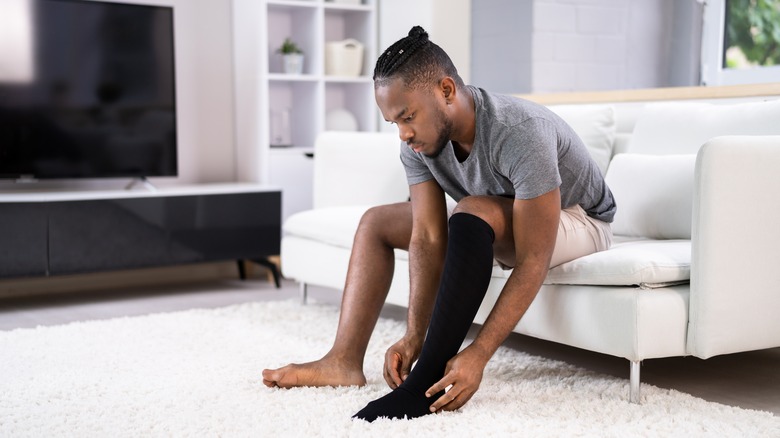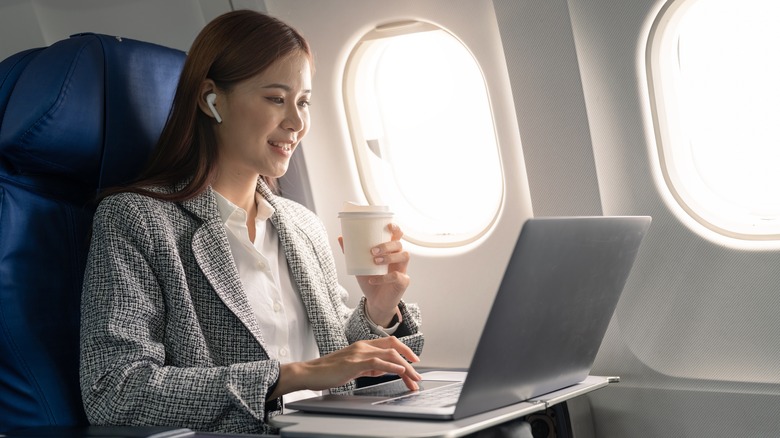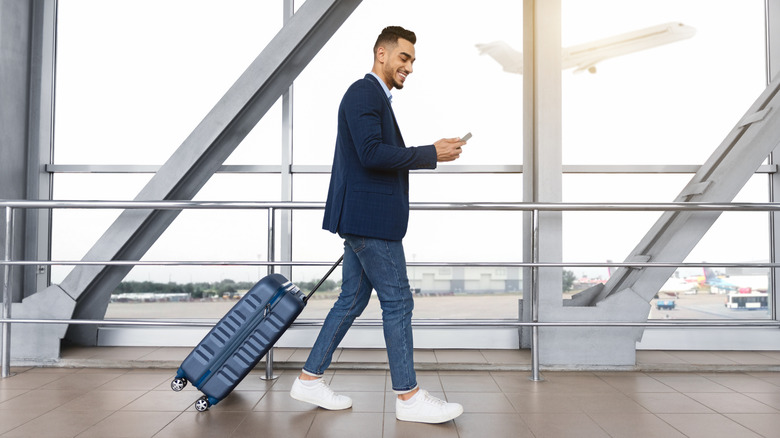You Should Really Start Wearing Compression Socks When You Fly. Here's Why
Boarding pass? Check. Effortlessly stylish plane outfit? Check. Compression socks? Um, hard pass. If there's one way to ruin an outfit, it's with a pair of stockings your grandma would embrace. But, wearing compression socks when you fly could literally save your life. They can also stop your ankles from becoming cankles, and make your flights infinitely more comfortable. And, compression socks are pretty stylish now if that's what's been stopping you from buying them.
For frequent flyers or anyone on a long-haul flight, compression socks should be an essential part of a plane outfit. They come with a range of health benefits, from preventing blood clots to warding off varicose veins, according to WebMD. As the CDC explains, when you're on a plane, particularly on a longer flight of four hours or more, you're probably not going to move around much (especially if you want to avoid catching a cold or the flu). Sitting still for that long in a small space causes circulation between your heart and your legs to slow down, increasing your risk of the aforementioned blood clots or a pulmonary embolism, reports Healthline. (Bad. Very bad.) Compression socks encourage normal blood flow, stopping blood from pooling in your lower legs, thus helping to prevent clots.
Health benefits of compression socks
The health benefits of wearing compression socks on flights are many, but the biggest one is preventing a deep vein thrombosis. The CDC warns travelers that sitting for long periods of time on a plane increases the risk of developing this type of blood clot. In rare but serious cases, it can break off and travel to your lungs, causing a pulmonary embolism. One way to prevent these types of blood clots is to wear compression socks.
Think compression socks are ugly? I'd wager you think varicose veins are uglier. According to researchers at the University of Utah, wearing compression socks can help stop varicose veins from developing. Finally, wearing non-medical-grade compression socks can also prevent your legs and feet from swelling up during a flight and lessen leg fatigue. This can reduce the discomfort that passengers often feel during and after a flight. You'll be able to step off the plane feeling ready to explore your destination.
Which compression socks do you need?
There are different types of compression socks and stockings. Most generally healthy people will benefit from a pair of knee-high compression socks that you can buy without a prescription. CNN advises that a good sock will offer 15 to 25 mmHg of compression, so look out for this when you're buying them. They should be comfortable to wear but will feel slightly tighter than normal socks. If you are at a higher risk of developing a blood clot, the CDC states that you should talk to your doctor about getting a prescription for graduated compression stockings.
Remember that there are other things you can do to help prevent blood clots from forming while on a flight. The CDC recommends moving your legs frequently and getting up to walk around during a long journey if you can.


